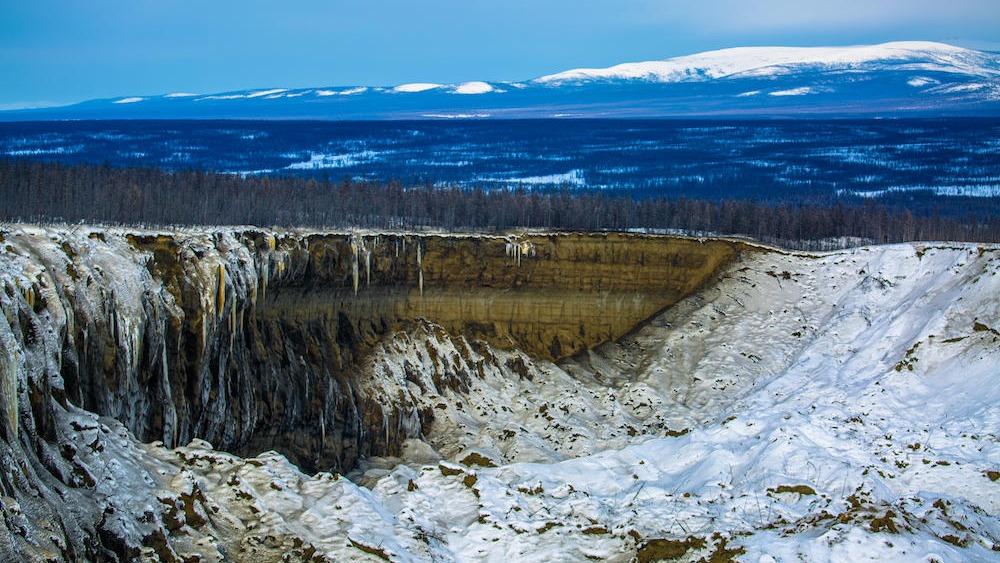Watch drone delve into Siberia's growing 'gateway to the underworld,' the largest permafrost depression in the world
Newly released drone footage confirms that the Batagay crater in Siberia continues to grow in size.

A massive crater in Siberia dubbed the "gateway to the underworld" by locals is continuing to grow larger, new drone footage reveals.
The footage, which was released on July 12, offers viewers a bird's-eye view of the Batagay (also spelled Bagatayka and Batagaika) crater, considered to be the largest permafrost depression in the world, according to Ruptly.tv.
Covering approximately 0.3 square miles (0.8 square kilometers) — equivalent to the area of about 145 football fields — the deep scar cutting through the east Siberian woodlands was likely triggered by deforestation during the 1940s. This led to erosion, which then exacerbated seasonal melting of the permafrost and created a "megaslump," or the massive crater in the ground. Because the permafrost in this region is comprised of 80% ice, the large amounts of melting forced sediment on the hillside to collapse, revealing what looks like a giant gash slashing through the landscape in Russia's Sakha Republic.
Related: Zapotec 'entrance to the underworld' discovered under Catholic church in Mexico
And it's not just drone imagery that shows that the crater continues to expand. Over the years, satellite imagery has also confirmed that the megaslump has grown in size. As the land has retreated, it has revealed "tens of thousands of years of frozen remains," dating as far back as the Middle Pleistocene, which ended 126,000 years ago.
In one study, the melt allowed scientists to access bison meat that had been frozen for roughly 8,000 years, giving researchers new insight into animals and plants that once inhabited the region.
Scientists aren't sure exactly how quickly the crater is expanding. However, locals claim that in the last several years, it has grown between 66 feet and 98 feet (20 and 30 m) at certain points, according to NDTV, a TV station in New Delhi.
"This is something very rare," Alexey Lupachev, a senior researcher at the Institute of Physicochemical and Biological Problems of Soil Science at the Russian Academy of Sciences, told Ruptly.tv. "This is a unique object of nature, which allows us to see the history of Earth over a period of half a million years preserved in permafrost."
Sign up for the Live Science daily newsletter now
Get the world’s most fascinating discoveries delivered straight to your inbox.
Jennifer Nalewicki is former Live Science staff writer and Salt Lake City-based journalist whose work has been featured in The New York Times, Smithsonian Magazine, Scientific American, Popular Mechanics and more. She covers several science topics from planet Earth to paleontology and archaeology to health and culture. Prior to freelancing, Jennifer held an Editor role at Time Inc. Jennifer has a bachelor's degree in Journalism from The University of Texas at Austin.










